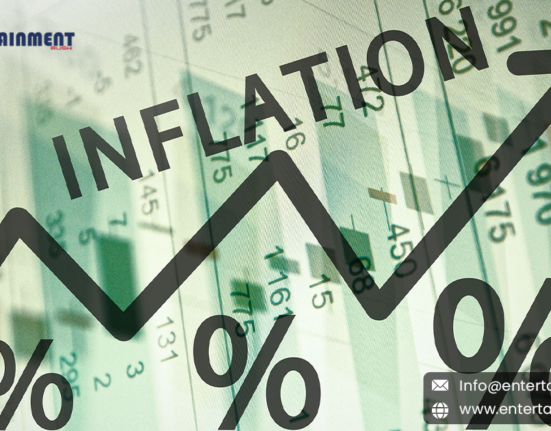Inflation, a pervasive increase in the prices of goods and services over time, directly impacts consumer purchasing power in the United States. When inflation occurs, each dollar buys fewer goods and services, leading to a reduction in the real value of money. This phenomenon fundamentally affects consumers’ ability to afford essential items, save for the future, and make informed long-term financial plans. Understanding the dynamics of how inflation influences consumer purchasing power is crucial for individuals, businesses, and policymakers alike to navigate economic landscapes effectively.
Understanding Inflation and its Causes
Inflation is influenced by several factors, each contributing to shifts in prices and economic conditions:
Demand-Pull Inflation:
This occurs when the demand for goods and services surpasses supply levels, exerting upward pressure on prices as businesses strive to meet consumer demands.
Cost-Push Inflation:
Arising from increases in production costs such as wages or raw material prices, this inflationary pressure is transferred to consumers through higher retail prices.
Monetary Inflation:
This results from an increase in the money supply relative to available goods and services, often driven by government policies like quantitative easing, which can lead to a depreciation in the purchasing power of money.
Expectations and Speculation:
Consumer and business expectations of future price increases can prompt behavior changes, contributing to inflationary pressures through increased spending and investment.
Impact on Consumer Purchasing Power
The erosion of consumer purchasing power due to inflation poses critical challenges for households:
Reduced Affordability:
Inflation can elevate the costs of essential goods and services, such as food, housing, and healthcare, placing strains on household budgets and necessitating trade-offs in expenditure.
Savings and Investments:
Inflation diminishes the real value of savings held in cash or low-yield assets over time, compelling savers to explore alternative investment options to preserve the value of their wealth.
Interest Rates and Borrowing:
Central banks often respond to inflation by raising interest rates to mitigate spending and stabilize prices. Consequently, higher interest rates can increase the cost of borrowing, impacting consumers’ ability to finance significant purchases like homes or vehicles.
Inflation’s Impact Across Socioeconomic Groups
The effects of inflation are unevenly distributed across socioeconomic strata:
Low-Income Households:
These groups are disproportionately affected by rising prices, as a larger portion of their income is allocated to essential expenses, leaving less room for discretionary spending.
Income Inequality:
Inflation can exacerbate income inequality by eroding the real wages of lower-paid workers, while asset owners, such as property or stockholders, may benefit from asset price appreciation.
Coping Strategies for Consumers
Consumers can adopt various strategies to mitigate the impact of inflation on purchasing power:
Budgeting:
Monitoring expenses and prioritizing essential purchases can help consumers effectively manage finances during inflationary periods.
Investment Diversification:
Diversifying investments across different asset classes, including stocks, bonds, and commodities, can provide a hedge against inflation and preserve long-term wealth.
Spending Adjustments:
Adjusting spending habits, such as opting for generic brands or seeking discounts, can optimize budgets and stretch purchasing power.
Policy Implications and Responses
Addressing inflation requires a balanced policy approach:
Monetary Policy:
Central banks employ tools like adjusting interest rates or managing the money supply to control inflation rates and stabilize economic conditions.
Fiscal Policy:
Governments can implement fiscal measures, such as taxation and public spending, to influence aggregate demand and supply, complementing monetary policy efforts. Inflation profoundly impacts consumer purchasing power in the United States, necessitating informed financial decisions and proactive measures to navigate economic uncertainties. By understanding inflation’s dynamics, adopting prudent financial strategies, and advocating for sound policy responses, consumers can mitigate the adverse effects of inflation on their standard of living and financial well-being, fostering economic stability and resilience. Monitoring inflation trends and implementing effective coping strategies can empower individuals and households to navigate changing economic environments with confidence and resilience.





Leave feedback about this